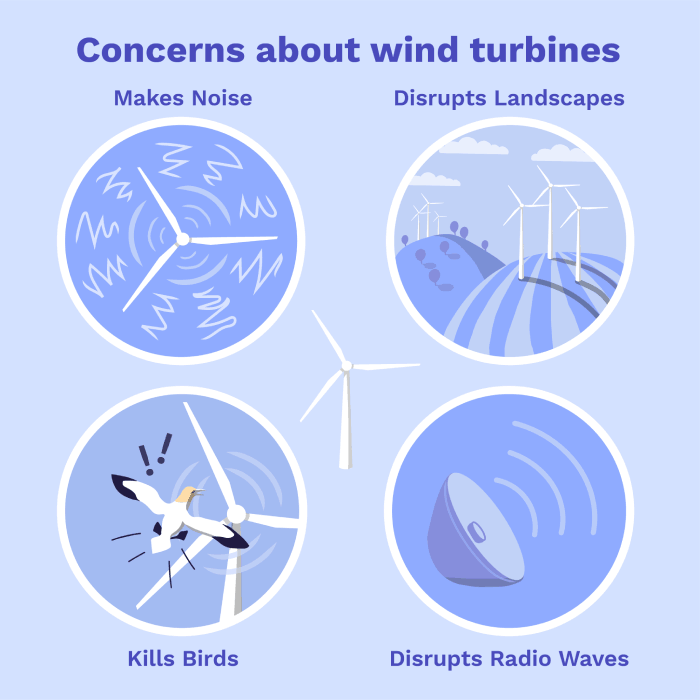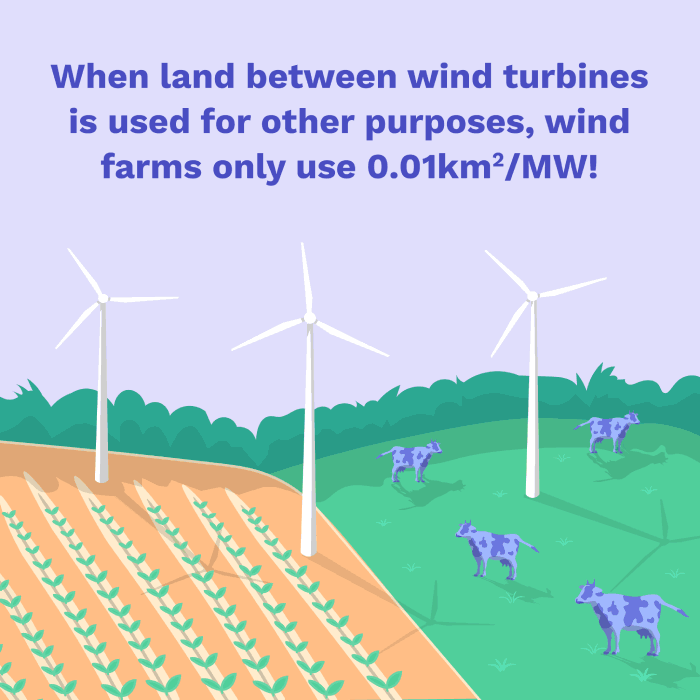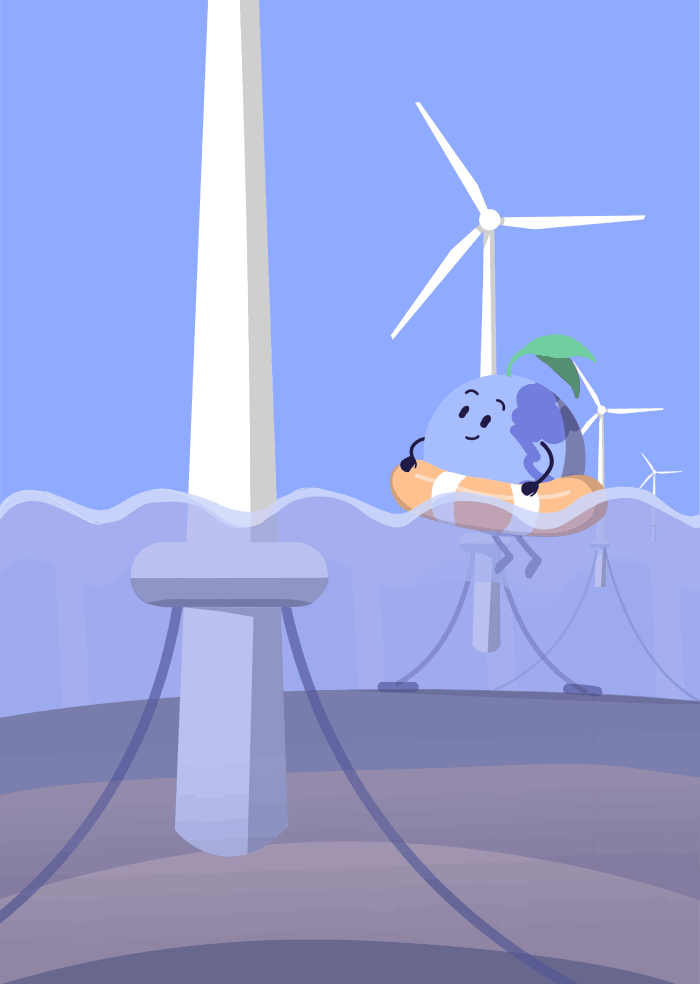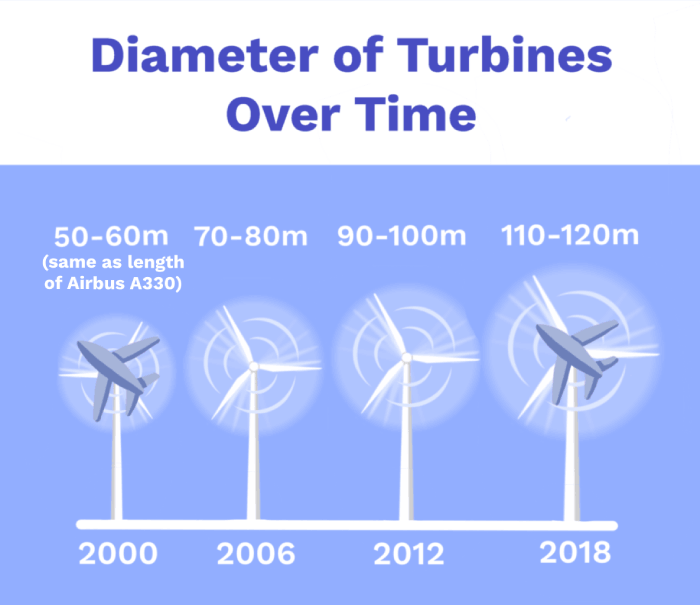Wind Power: Potentially the Greatest Opportunities for Clean Energy
11 minute read
Updated on: 03 Mar 2021
Today, wind only provides 0.8% of the total global energy supply. In this chapter, we’ll take a look at what we can do to increase this. But before that, let’s explore how wind power works.

Earthly and umbrella
How does wind power work?
Wind power comes from large wind turbines, which turn the kinetic energy of wind into electrical energy.
Most turbines have two or three blades, which are designed to spin when the wind hits them from a particular angle. These blades then spin a rotor which powers a generator to produce electricity
.
How much does wind power cost?
Onshore wind (where turbines are on land) is one of the cheapest forms of renewable energy we have, and in some cases it’s even cheaper than energy from fossil fuels.
This price is expected to decrease even further in the future. By 2030, the global average cost of onshore wind energy is likely to drop to $0.03-0.05 per kWh - down from $0.06 per kWh in 2018
.
As we build more turbines, the cost of building them goes down. This is due to something called economies of scale: many of the costs of building a product (such as design) only need to be paid for once, no matter how many we build. Therefore the more of a product we make, the cheaper they become on average
.
Wind power is also getting cheaper because the amount of power each turbine generates has increased. This is due to technological improvements.
Improving wind turbines?
There are two important numbers we need to look at:
Rated power: Turbines make more power when the wind is faster, right? Yes, right. But at some point this stops and faster wind won’t lead to more energy. This point is called rated power, and the higher it is, the better.
Capacity factor: This is the fraction of time a turbine is running at its rated power. If we build a turbine in a region with little wind, it will rarely reach its rated power. Therefore it will have a low capacity factor. Currently, onshore wind turbines operate at only a 34% capacity factor
.
Until we increase this number, wind won’t be able to provide us with a stable supply of energy, unless we spend huge amounts of money finding a way to store extra energy for when the wind’s not blowing
.
With all this in mind, let’s take a look at how we can increase each of these numbers.
Bigger is better - Increasing rated power
In recent years, wind turbines have been getting bigger. The image below shows how the diameter of turbines in the US has increased over the last 20 years:
This growth means that wind turbines can now, on average, generate a lot more power.
While bigger turbines do cost more to construct, they also produce more energy so they are cheaper in the long run.
However, the blades are now getting so enormous that transporting them from the factory is becoming a lot harder. This means we have to build the turbines on-site, which can be more expensive
. Bigger turbines also experience greater forces from the wind, so need to be built out of stronger material, which can be difficult to produce
.
Of course, increasing a turbine’s rated power doesn’t mean much if it’s rarely operating at this power because the wind is too slow. What can we do about this?
Can wind power be reliable? Increase the capacity factor!
Generally speaking, the wind at sea is both faster and more constant than on land. Therefore, wind turbines at sea (called offshore turbines) can generate more power, more consistently
.
The wind is also stronger and more constant higher up, so building taller turbines has a similar impact. However, as with larger turbines, this requires strong materials, which are currently more expensive
.
So how else could we harvest this high wind energy?
Airborne wind - sailing our way to higher capacity factors?
Airborne wind power is a set of technologies that capture the very strong winds high up in the atmosphere.
One of these technologies involves flying kites to capture wind energy 70-450m high. Here’s how it works
:
- Kites are attached to long cables, which are wound up in a coil attached to the ground.
- The kites are steered to fly away, pulling the cable and unravelling the coil to produce power.
- Once the coil is fully unravelled, the kite is adjusted so that it can be winched back in on the cable, using less energy than it produced flying out.

Kite power
More research needs to be done before this becomes commercially viable, but doing so could increase wind power’s capacity factors from around 35% to 60%.
What about environmental costs?

Concerns about wind turbines
Let’s take these one by one.
Visual impact: This could be reduced by putting wind farms in remote places and offshore. Where possible, operators could involve local communities with the planning and even ownership of new farms.
Noise: Altering the shape of the blades can slightly reduce the swooshing sound they make. The mechanical noise from the turbines themselves can also be reduced
by using quieter gears or building acoustic casings around the tops of turbines
.
Radio waves: Windfarms can disrupt radio waves. This can impact radar navigation systems of nearby boats and planes
. We need to find ways to train our current radar systems to recognise the signals coming off turbines, and/or build new turbines with radar-absorbing materials
.
Birds can be killed from collisions with spinning blades, but avoiding building turbines in areas with high numbers of birds can reduce this impact
. Birds can also be protected by pausing turbines if rare species are nearby
. For offshore wind farms, turbine height can be adapted to reduce overlap with the flight of seabirds
.
Land use
Big wind turbines can generate a lot of power, but they also take up a lot of space. A 3.4km² nuclear plant would produce as much power as 344km² of land full of wind turbines
.That said, if we use the space between wind turbines, to farm food for example, we reduce the actual land “lost” to wind by over 90%!
.

Wind farm area requirements
Wind farms floating on the ocean
One obvious way we can decrease the land use of wind turbines is by building them offshore.
We’ve seen that offshore wind farms can have higher rated powers and capacity factors, but they also cost more to build and maintain. That said, economies of scale and increased demand could mean that a lot more offshore wind farms appear in the future
.
Today’s offshore wind turbines can only be built near to the coast on shallow continental shelves. But these only make up 10%
of the ocean, which limits the amount of space available to build wind farms. Additionally, the winds on continental shelves are slower and less constant than in the deep ocean
.
To solve this, engineers are working on floating wind turbines.These are simply anchored to the seafloor using large cables and could be built at virtually any depth
.

Floating wind turbine
Several trials of this technology are underway around the globe. For example, one floating wind farm has been operating with a rated power of 30MW off the coast of Scotland since 2017, and has operated at capacity factors of up to 65%, surviving waves 8.2m high
! Isn’t that awesome?
Conclusion
Big wind turbines can produce large amounts of clean and, importantly, cheap energy. This is great, but it isn’t helpful unless the power supply is stable.
In this chapter we’ve seen that increasing the capacity factor of turbines is our best chance to increase the stability of wind power.
This helps us to a point, but sadly it remains impossible for humans to control the weather. So to use wind at large scales, we need large amounts of energy storage to make up for when the wind isn’t blowing fast enough.
A renewable energy source that is cheap and reliable is hydropower - the subject of the next chapter!
Next Chapter




